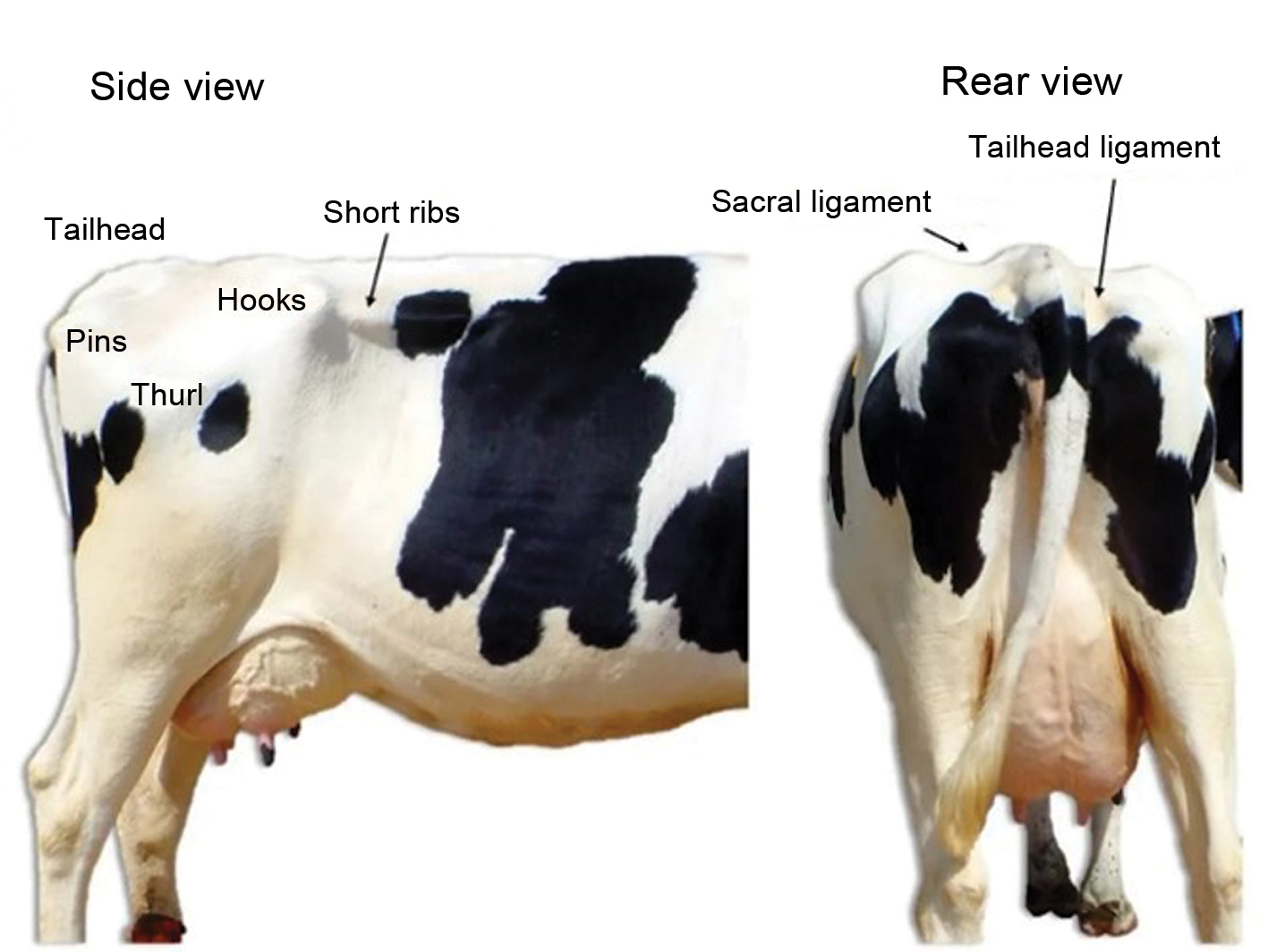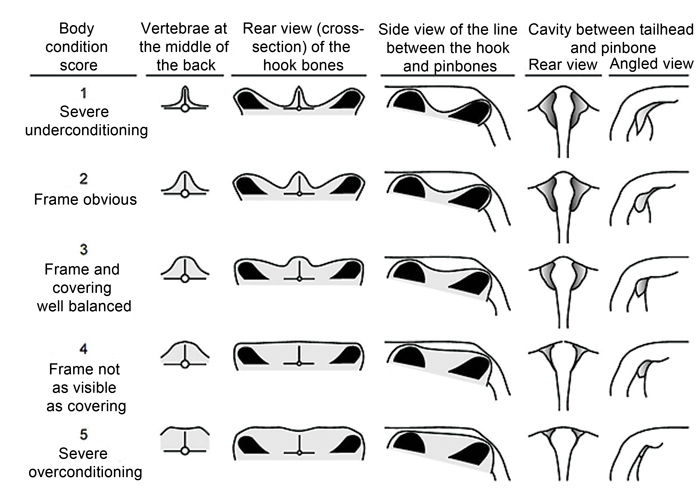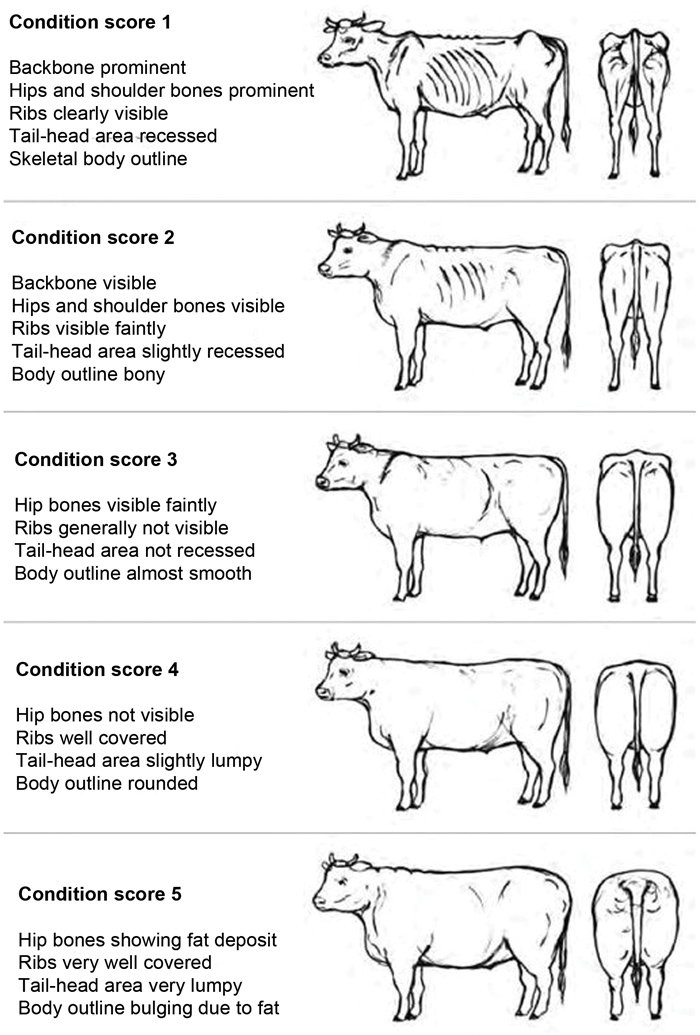December 2023
| PIETMAN BOTHA, INDEPENDENT AGRI- CULTURAL CONSULTANT |
 |
The body condition scoring (BCS) of cattle allows farmers to assess the fat reserves of cows during various production phases. When evaluated at key production times, this information can be used in management and feeding decisions. The aim of BCS is to obtain a simple and reliable measure of the level of body fat reserves in live animals.
It is important for a farmer to keep his eyes on his cattle and to spend time with the herd to keep them fat, but what should a farmer look at when he is with his cattle? The most important aspect is to determine that each animal’s stomach is filled and that it was also filled yesterday. This is very important, as enough feed will lead to the production of calves. Therefore, it is important to look at the BCS because this will help the farmer to keep track of what is happening throughout the year.
FEEDING AND MANAGEMENT
Cattle farmers can use BCS to regulate the feeding and management, which will ensure that breeding cattle are in an appropriate condition at different stages of their production cycle. Action can then be taken to alter the condition of cows that are not in the right condition at critical stages. Scoring can be done easily in circumstances where weighing may be impossible or impractical.
The technique is easily learned and is most useful when practised regularly by the same person in the same herd over several years. The use of technology such as regular photos of each cow can be of helpful to see changes in a cow.
BCS OF BEEF COWS
Variation in the BCS of beef cows has several practical implications. The condition of cows at calving is associated with the lactation performance of each cow, as well as the health of the new-born calf. Incidents of calving difficulty increase in extremely fat heifers, although the condition is often overrated as a cause of calving difficulty in older cows.
However, the condition of cows at breeding affects their reproductive performance in terms of the number of services required per conception, calving interval and the percentage of cows failing to become pregnant during the breeding season.
Numbers are used in the BCS system to describe the relative fatness or body composition of the cow. The scoring system for beef cattle has a range of one to five, with one representing very thin cows and five representing very fat cows. A cow with a BCS of three is in an average condition. Evaluation focusses on the backbone, ribs, hip bones, rump, pin bones, tailhead and thigh, as evaluations marks used in assigning the BCS illustrate in Photo 1.

Evaluation marks in assigning BCS.
Look at the following when doing the body condition scoring of cows (See Figures 1 and 2):

Figure 1: Guidelines for determining BCS by palpation of fat cover.
Source: https://www.pakdairyinfo.com/bcs.htm

Figure 2: Body conditioning score guidelines.
Source: https://www.researchgate.net/figure/Cattle-body-condition-scoring-system-Anon1994-Body-condition-scores-BCS-of-1-5-were_fig14_267948147
The system is relatively simple: Thinner cows look very sharp, angular and skinny, while fatter cows look smooth and boxy with bone structures increasingly hidden from sight or touch.
By comparing the newest BCS with the previous BCS, the change can be measured and correction actions can be implemented. Changing the licks or camps can have a major impact on the BCS and eventually on the calving percentage. A body conditioning score of one or two will improve with the inclusion of maize in the feed mix.
Remember that gut fill and late pregnancy can make animals appear fatter than they are.
Farmers must aim to keep cows’ BCS between a score of two and four, with the aim at three. When this is done, cows will produce calves and each cow will have enough milk to produce a good weaner calf. The body condition, particularly at calving, has a major influence on pregnancy outcomes in cow-calf operations.
Take a yearlong approach by doing body condition scoring of the cow herd (or a representative portion of the herd) periodically during the season. This will help to make informed decisions related to weaning, supplementation, forage and other management that can affect the body condition.
Proactive management can help farmers to keep their cows in a seasonally appropriate body condition economically, allowing the operation to achieve optimal reproductive performance.
Publication: December 2023
Section: Pula/Imvula